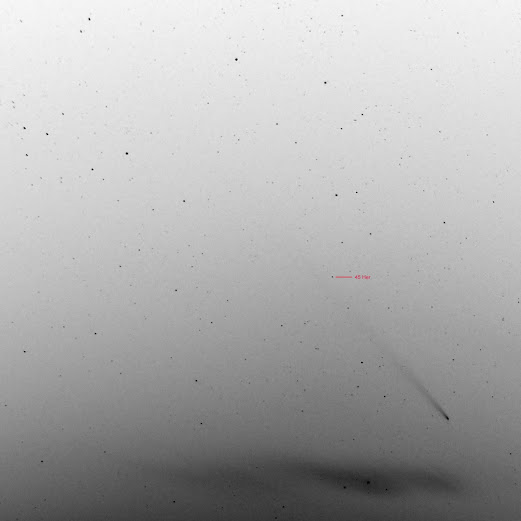Whilst I was taking pictures of Comet Tsuchinshan-Atlas on the 18th October I realised that the constellation of Corona Borealis was nicely placed for observation as well. We have been waiting about a year now for the eruption of the recurrent nova T Corona Borealis (T CrB) and, as yet, it still hasn't exploded. According to Prof. Bradley E Schaefer the star was predicted to erupt about the 25th May 2024 with an upper error bound of the 12th September. This prediction was based on T CrB entering a "super active" state in 2015 and then entering the pre eruptive "Peltier dip" in the middle of 2023. The problem with predictions is that the stars themselves are fickle and we do not have a good knowledge of exactly what is happening in the processes that lead to an eruption.
I took this image of the constellation of Corona Borealis at 18:59 UT on the 18th October. This was taken with my Nikon D90 with a Nikkor VR 18-105 lens at 75mm. The main image consists of 8x5s exposures (ISO 3200) combined in Photoshop (click on the image to see it full size). This shows the bowl shape of the crown quite well and I have marked the star epsilon CrB near to which the star T CrB can be found. The blue square in the image has been expanded upon in the top left image. This is based on 16x5s exposures at ISO3200 and the contrast has been increased in Photoshop. This inset is at the full resolution of the camera. I have used the BAAVSS chart 025.04 to label some stars and indicate how bright they are in visual magnitudes (the star is always to the right of the green label). The faintest stars being picked up are just about 10th magnitude. The position of T CrB is marked but as can be seen it is only just faintly registering and must have been 10th magnitude or fainter at the time.
Along with the rest of the BAA, I have been continuing to monitor this star as often as I can. My last observation was yesterday (the 25th November 2024) and in binoculars there was still no sign that this star had erupted. At the moment the light curve for this star is still showing that it is fluctuating between 10.0 and 10.5 magnitudes. Of course, you can now find papers that are predicting later eruption dates but who knows what will happen.
All text and images © Duncan Hale-Sutton 2024





